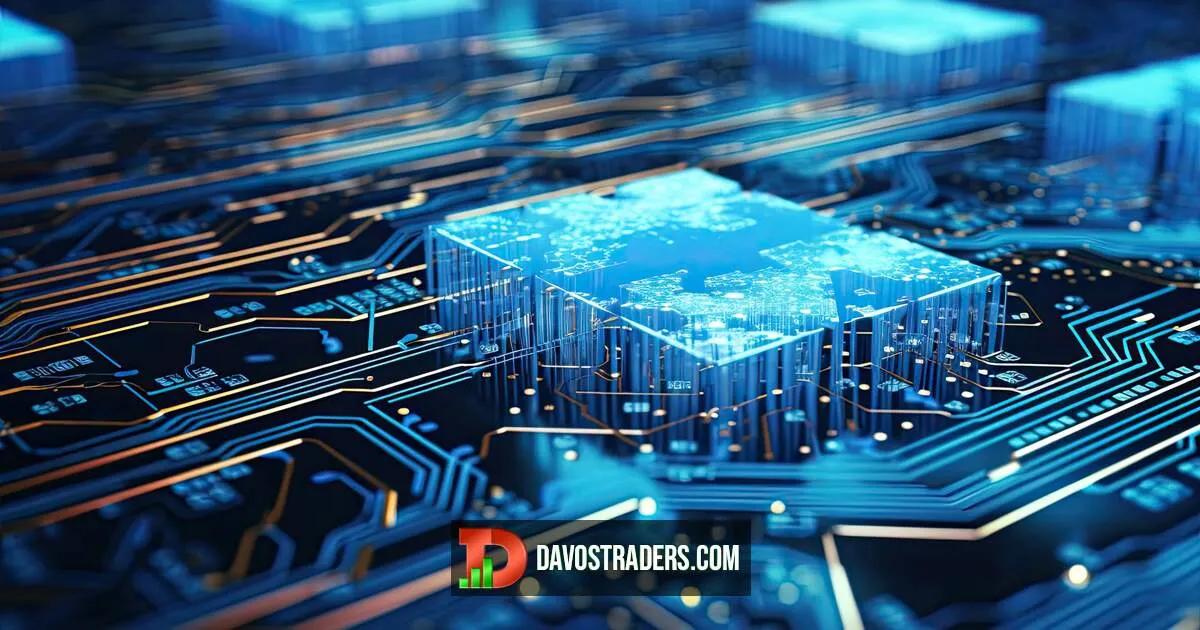What is Blockchain Technology? A Simple Guide for Beginners (2025 Edition)
Blockchain is one of the most talked-about technologies of the 21st century, yet it’s often misunderstood. Whether you’ve heard about it in the context of Bitcoin, NFTs, or crypto trading, understanding the basics of blockchain is essential in 2025—especially if you're exploring opportunities in the digital world.

This beginner-friendly guide breaks it all down for you in clear terms. Let's dive in.
What Exactly Is Blockchain?
At its core, blockchain is a digital ledger—a system of recording information in a way that is transparent, secure, and decentralized.
Instead of storing data in a single place (like a bank or company server), blockchain distributes copies of data across a network of computers (nodes). This makes the system resistant to tampering, since no single entity controls it and any change would need to be validated by the network.
How Does Blockchain Work?
Here’s a simplified breakdown:
- Transactions are grouped into blocks.
- Each block is linked to the previous one, forming a chain—hence the name blockchain.
- Once a block is added, the information is immutable (cannot be changed).
- This entire process is maintained by nodes through consensus mechanisms like Proof of Work or Proof of Stake.
In 2025, newer blockchains focus on energy efficiency, scalability, and faster transaction speeds, solving some of the early limitations.
Why Is Blockchain Important?
Blockchain isn’t just about cryptocurrency. Its core principles—transparency, decentralization, and security—are revolutionizing multiple industries, including:
- Finance (crypto, DeFi, cross-border payments)
- Healthcare (secure patient data records)
- Supply Chain (product tracking and verification)
- Real Estate (smart contracts and ownership tracking)
- Gaming & NFTs (ownership of digital assets)
It removes the need for intermediaries, cuts costs, and builds trust in digital interactions.
Blockchain vs. Traditional Databases
To better understand blockchain technology, it's helpful to compare it with traditional databases. Here's how they differ:
1. Data Storage Method
Traditional databases store information in centralized locations and are typically controlled by a single entity. In contrast, a blockchain stores data in a decentralized and distributed ledger across multiple nodes, which makes it far more resistant to tampering or loss.
2. Transparency and Trust
Blockchain is designed for transparency. Every transaction is visible to all participants and is permanently recorded. Traditional databases, however, rely on trust in a central authority or administrator to manage and secure data.
3. Immutability
Once data is recorded on a blockchain, it cannot be changed or deleted without consensus from the network. Traditional databases, on the other hand, allow for updates and deletions at any time, which can introduce vulnerabilities or human error.
4. Security and Validation
Blockchain transactions are validated through cryptographic algorithms and consensus mechanisms like Proof of Work or Proof of Stake. This makes unauthorized alterations extremely difficult. In traditional systems, access controls and admin privileges determine who can view or change data, which can be a point of failure.
5. Use Case Focus
Traditional databases excel in high-speed, high-volume environments like banking systems or content management platforms. Blockchain, while slower due to its validation requirements, is ideal for scenarios that demand high security, transparency, and decentralization—such as crypto trading, smart contracts, or digital identity management.
Is Blockchain the Same as Cryptocurrency?
Not exactly. Blockchain is the underlying technology that powers cryptocurrencies like Bitcoin, Ethereum, and others. But it has broader applications beyond digital money.
You can think of cryptocurrency as just one use case—albeit a major one—of what blockchain can do.
How Can Beginners Get Involved in Blockchain?
Getting started doesn't require deep technical skills. Here are beginner-friendly ways to explore blockchain:
- Educate yourself through courses, YouTube channels, or blogs (like this one).
- Create a crypto wallet and start with small amounts of well-known coins.
- Join communities on Telegram, Reddit, or Discord to learn from others.
- Follow crypto market signals (like those offered via Telegram crypto channels) to learn trading patterns while building confidence.
- Experiment with blockchain-based apps (DeFi, games, NFT platforms) to understand real use cases.
The Future of Blockchain in 2025 and Beyond
In 2025, blockchain adoption is no longer a niche trend—it’s moving toward mainstream usage. From central banks exploring digital currencies (CBDCs) to major brands integrating NFTs and smart contracts, blockchain is shaping how the digital economy works.
Expect to see more regulatory clarity, improved user interfaces, and even non-crypto industries leveraging blockchain tech in meaningful ways.
Final Thoughts
Blockchain is here to stay—and it’s evolving fast. Whether you’re interested in trading crypto, building apps, or simply understanding where digital innovation is headed, now’s the time to get familiar with the fundamentals.
And if you’re ready to take the next step, learning to interpret market trends can give you a serious edge. That’s where reliable crypto trading signals can make the difference—especially if you're still learning the ropes.
👉 Join our free Telegram channel @davostraders and stay informed with daily insights, trading signals, and updates to guide your crypto journey.
